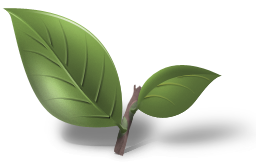'Unfinished' Tieguanyin
-
pathlesstaken
- Posts: 28
- Joined: Sat Feb 15, 2025 2:23 pm
- Location: England
- Contact:
With high roast Tieguanyin, such as that produced by Fukien, Seadyke, etc, I have read that there is a particular rough tea that is purchased from the farmers, which is then repeatedly roasted by the teahouse themselves. I'm assuming that this tea is not processed in the same manner as the nowadays very popular green styles. Is there a name for such a tea, and are there any vendors that have it?
From a technical side, it would need to be processed to the point that it is stable enough to be transported to HK. So basically green style oolong at the required oxidation level and then sold to further roast. I know ppl who do this in Taiwan with Baozhong, first fresh, when it is not fresh anymore they roast the rest.pathlesstaken wrote: ↑Sat Jul 05, 2025 9:29 amI'm assuming that this tea is not processed in the same manner as the nowadays very popular green styles. Is there a name for such a tea, and are there any vendors that have it?
I imagine they custom order the kind of prep tea they want for their roast.
-
pathlesstaken
- Posts: 28
- Joined: Sat Feb 15, 2025 2:23 pm
- Location: England
- Contact:
Ah, that is interesting. For that Baozhong, is it just roasted lightly as to 'refresh' it, or is it more aggressively done?Bok wrote: ↑Tue Jul 08, 2025 2:23 amFrom a technical side, it would need to be processed to the point that it is stable enough to be transported to HK. So basically green style oolong at the required oxidation level and then sold to further roast. I know ppl who do this in Taiwan with Baozhong, first fresh, when it is not fresh anymore they roast the rest.pathlesstaken wrote: ↑Sat Jul 05, 2025 9:29 amI'm assuming that this tea is not processed in the same manner as the nowadays very popular green styles. Is there a name for such a tea, and are there any vendors that have it?
I imagine they custom order the kind of prep tea they want for their roast.
In order to be stored efficiently, it needs more roast. Does not need to be aggressive, but consecutively a few rounds with resting time. A good roast will leave the essence of the tea intact.pathlesstaken wrote: ↑Tue Jul 08, 2025 7:25 amAh, that is interesting. For that Baozhong, is it just roasted lightly as to 'refresh' it, or is it more aggressively done?
The so-called heavy roast (gaohuo) that fukien and to a lesser extent seadyke employ do not mean that their teas can age well. That's because the main difference between the traditional/chuan tong style vs modern style is less to do with the level or degree of roast but what comes prior to the roasting process - how "shou" or fermented it is, the level of oxidation, the amount of water remaining in the leaf after the withering/wei diao and shaking/zuo qing stage. That's why we feel that teas that are too green (not oxidized) enough cannot withstand the gaohuo and become burned.. ending up with a coffee-like flavor but little else remaining. No bones/yan-yun, no minerality... only an ashy aftertaste which deceives many into thinking its minerality or worse, a sign of quality. I had other brands like Jiquan Shuixian and Cheung Hing Tieluohan which were both simultaneously too green and too roasted. These teas have little substance left to age and ought to be drunk, if at all, within a few years. Worse still, the high roast does not rid the leaf of the remaining moisture after the zuo qing stage! My main gripe remains - the modern style of tieguanyin and yancha by extension aren't "shou"/ripe enough! Hence, these teas require re-roasting down the line which will further kill off the tea. Why don't producers simply revert to the chuan tong style which would allow for sufficient (zuhuo) roast? The answer is that the market demand calls for obvious fragrance. Stopping the wei diao and zuo qing process prematurely, aggressively rolling the leaf, produces tea that has a noticeable guo xiang/fruity fragrance that is appealing and accessible. But the trade-off will be of course age-ability.
